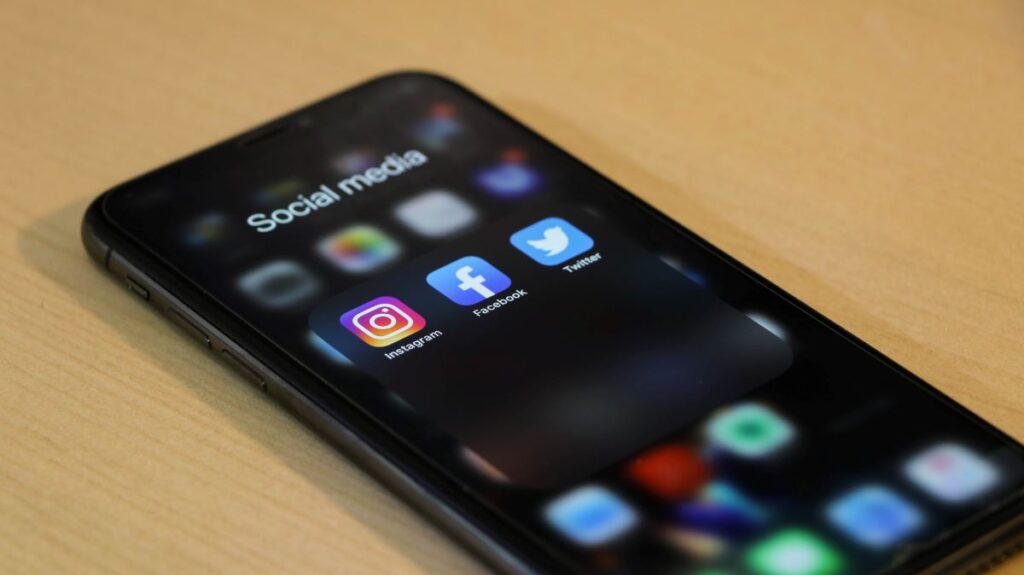
96% of young people (16-24) use social media (ONS, 2017). These can be platforms like Snapchat, Twitter, Instagram, Reddit or YouTube. It’s a great way to contact friends, meet people with similar interests and share experiences, but there have always been concerns about social media use and how it might impact negatively on young people’s mental health.
Among young people, we see high rates of self-harm, around 15% in adolescents aged 14 (Children’s Society, 2018) with a lifetime prevalence of 12.1% across school-going years (Doyle et al., 2015). Thus, fears have been raised that social media may allow for content which “normalises, glamourises or reinforces” self-harm within young people (Lavis & Winter, 2020). In particular, that it may allow the sharing of content that will increase self-harm exposure and social contagion (Dunlop et al., 2011; Insel & Gould, 2008; Lupariello et al., 2019).
The authors of this paper therefore aimed to contribute to the evidence base by enhancing the understanding of why a young person might seek out self-harm content online, how they engage with this and what the impact is on their mental health and well-being (Lavis & Winter, 2020).

96% of young people (16-24) use social media (ONS, 2017), but many concerns have been raised about the potential harms this may have on their mental health.
Methods
This qualitative study took place across a 15-month period (May 2018 – January 2019). It’s split into an online ethnography of Twitter, Reddit and Instagram, supplemented with 10 semi-structured interviews. These datasets were triangulated, with a thematic analysis conducted on both datasets.
Online ethnography
Across the social media platforms, data was identified based on variations of “self-harm” or “self-injury” hashtags and conversations developing from these. Hashtags and content blocks such as subreddits were identified, posts were assessed to determine whether they were posted by a young person (10-24 years) and those most prevalent were selected across platforms. To determine if a post was made by a person in the target age group, profiles were checked, language was considered (e.g. use of slang) and conversations were evaluated to check for topics that are more prevalent for young people (e.g. school, college, living at home).
Data consisted of short-posts, text-based and pictorial posts from the three social media sites. In May 2018 and January 2019, 10,169 original posts and 26,934 comments were downloaded for analysis. These posts were publicly available, however, to ensure that comments weren’t traced to their original post, the paper contains no direct quotes, photos, or usernames (BPS, 2017).
Interviews
10 semi-structured interviews also took place with young people through email, WhatsApp and Skype. All participants had experience of either previous or current engagement with self-harm content on social media. Participants were guided to discuss social media or self-harm experiences that they felt were important.
Results
The findings of this study are presented under 3 main themes, which travel through the motivations for an individual to seek online self-harm content, the important aspects of online self-harm content and how this transfers to offline behaviour.
1. From offline to online: motivations for seeking self-harm content on social media
Self-harm begins before moving online. Seeking self-harm content appears to be related to validating individuals own experiences and understanding of their actions. Often young people feel as though they can’t speak to people in their lives about these behaviours due to stigma and negative responses. There is a clear desire to seek professional help but concerns about receiving such support is hindered by limited resources and waiting lists. Therefore, seeking online self-harm content tends to relate to gaining support from other young people who have also had these experiences. This builds a supportive framework for the individual, with experienced individuals who understand what that person is going through in a moment of crisis, distress and acts of self-harm.
2. Online interactions: giving and receiving peer support
Peer support is central to self-harm content online, whether this is offering the support or receiving it. This may be recommending practical solutions to someone in distress e.g. distraction techniques and explaining harm minimisation methods. Notably, “being there” for someone, demonstrating that there is someone who cares and is available to talk to, was seen as crucial. Indeed, graphic self-harm content was seen as a cry for help; that the poster of such content was in great distress and in need of support from users, but was potentially unable to verbally communicate this need.
3. From online to offline: the value, impact and ambivalence of peer-support
While those who received support online demonstrated gratitude and expressed the difference that it made, there are also difficulties when it comes to providing online peer support. Young people may fall into the trap of feeling as though they are “not helping enough”, feeling overwhelmed, damaging their own mental health, and potentially re-triggering themselves. There was evident awareness that images or stories from others may be distressing, and the use of trigger warnings can mediate what an individual lets them-self see in a given moment.
Online content may also offer information on how to “safely self-harm”. This develops from an understanding that self-harm may happen. It’s a way of coping or it may serve an individual function to that person, and if self-harm does happen these are the ways to keep oneself safe. However, there was widespread support for resisting self-harm and “keeping clean”, celebrating all achievements, large and small.

Peer support is a key aspect of social media content around self-harm.
Conclusions
The authors give a holistic view of how and why young people interact with self-harm content on social media. Across 3 platforms (Twitter, Reddit and Instagram) and reinforced by interviews, they identify that self-harm content engages people with these shared experiences allowing for peer support; particularly important given the gaps within professional services and social stigma. While understanding that removal of graphic content may safeguard individuals, this may also impact the peer framework of support negatively.

Social media can provide benefits, as well as risks, to young people who self-harm.
Strengths and limitations
One of the key strengths of this methodology is that it allows researchers to engage with online content with no research input, allowing them to see how, in this case, young people talk about self-harm and what content is within the public domain. With interviews, focus groups or ethnological studies, participants are aware of the researcher. This can impact how they might respond or behave in a particular setting. But data searched from the online public domain, can represent a natural communication environment (BPS, 2017).
However, as the authors note, social media can limit demographic information on a platform. There is no guarantee that those talking around the content are within the target age range, as some may be outside the demographic or much older than the target group. As the old warning goes, you can be anyone online.

Online ethnography can allow for discussions which may typically not occur in research settings due to stigma.
Implications for practice
A particularly interesting point of this study is the precaution of removing graphical content. At first glance, this would appear a logical move taken by the social media platforms to safeguard young people. But as the authors experienced with Instagram’s safeguarding movement in 2019, removal of such content limits how young people can engage with the person in distress and support them. There needs to be more consideration taken into this decision and future research to justify whether it’s worth losing a critical arm of this support network.
Self-harm is often stigmatised and this can create barriers to health seeking (Lavis & Winter, 2020; Williams et al., 2018). A recent mixed-method study suggested that there was no consistent support type which offers effective care for people who self-harm (Samaritans, 2020). Participants commented on difficulties reaching mental health services (Samaritans, 2020), which mirrors experiences of young people within Lavis & Winter’s study (2020). It has been suggested that more self-harm related training for health professionals would help to reduce stigma (Samaritans, 2020) and understanding the dynamic of online communities, such as discussions on social media, may influence help-seeking for self-harm (Williams et al., 2018).

Should removal of graphical self-harm content be standard? Or does this also remove access to peer support for young people?
Statement of interests
I’ve previously published an article which also considers online communities and self-harm. I have known both Dr Anna Lavis and Dr Rachel Winter while working at the University of Birmingham. We do not currently work on any projects together.
Links
Primary paper
Lavis, A., & Winter, R. (2020). #Online harms or benefits? An ethnographic analysis of the positives and negatives of peer‐support around self‐harm on social media. Journal of Child Psychology and Psychiatry.
Other references
British Psychological Society. (2017). Ethics guidelines for internet-mediated research. Leicester, UK: British Psychological Society.
Children’s Society (2018) Children’s Society. [Online] [PDF, last accessed 06.06.2020].
Doyle, L., Treacy, M. P., & Sheridan, A. (2015). Self‐harm in young people: Prevalence, associated factors, and help‐seeking in school‐going adolescents. International journal of mental health nursing, 24(6), 485-494.
Lupariello, F., Curti, S. M., Coppo, E., et al. (2019). Self‐harm Risk Among Adolescents and the Phenomenon of the “Blue Whale Challenge”: Case Series and Review of the Literature. Journal of forensic sciences, 64(2), 638-642.
Insel, B. J., & Gould, M. S. (2008). Impact of modeling on adolescent suicidal behavior. Psychiatric Clinics of North America, 31(2), 293-316.
Office for National Statistics (2017, August). Social networking by age group, 2011 to 2017. [Online] [last accessed 06.06.2020].
Samaritans. (2020, October). Pushed from pillar to post: Improving the availability and quality of support after self-harm in England.
Williams, A. J., Nielsen, E., & Coulson, N. S. (2018). “They aren’t all like that”: Perceptions of clinical services, as told by self-harm online communities. Journal of health psychology, 1359105318788403.
Photo credits
- Photo by Tim Mossholder on Unsplash
- Photo by dole777 on Unsplash
- Photo by Helena Lopes on Unsplash
- Photo by ROBIN WORRALL on Unsplash
- Photo by Kon Karampelas on Unsplash
- Photo by Prateek Katyal on Unsplash
- Photo by Edward Howell on Unsplash
